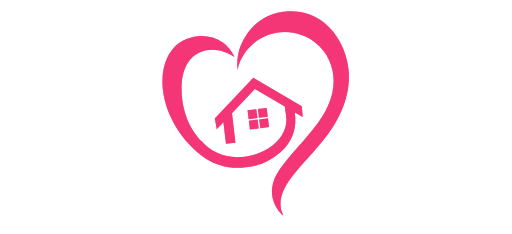Gastric band surgery is a popular type of bariatric procedure that helps individuals achieve long-term weight loss by restricting food intake. For those considering or preparing for this surgery, understanding the week-by-week recovery timeline is crucial. This comprehensive guide explains what to expect after surgery, including healing stages, dietary phases, adjustment visits, and tips for optimal recovery.
Whether you’re comparing gastric band, gastric sleeve, gastric bypass, or gastric balloon options, knowing the recovery process helps set realistic expectations. This guide also touches on how procedures like tummy tuck or mommy makeover might come into play later in your weight loss journey.

How Long Is Recovery After Gastric Band Surgery?
What Happens Right After Gastric Band Surgery?
Immediately after gastric band surgery, patients are closely monitored in the recovery room for a few hours. Most people return home the same day or within 24 hours. You’ll feel some abdominal discomfort or bloating caused by the laparoscopic tools and gas used during surgery. Pain is usually manageable with prescribed medications.
In the first 24–48 hours:
- Stick to clear liquids only
- Rest and avoid any physical exertion
- Begin walking gently to reduce the risk of blood clots
This stage is also the beginning of your four-stage post-op diet that will evolve over the next 6 weeks.
What Is the Week-by-Week Recovery Timeline?
Week 1: Clear Liquids Only
This is the most sensitive stage post-surgery. Your stomach is healing, and the gastric band needs time to settle into place.
What to expect:
- You’ll feel fatigued and possibly nauseous
- You’ll be on a clear liquid diet: water, broth, sugar-free gelatin, electrolyte drinks
- Walking every couple of hours is recommended
Tip: Avoid caffeine, carbonated beverages, and sugary liquids.
Week 2: Full Liquids
If you’re healing well, your doctor will approve progression to full liquids.
What to expect:
- Less pain and swelling
- Increased hunger, but still no solids
- Protein shakes and smooth soups are introduced
Continue to sip slowly and avoid gulping to prevent discomfort around the gastric band area.
Week 3–4: Pureed and Soft Foods
During this phase, your digestive system gradually adapts to thicker textures.
What to expect:
- Foods like mashed potatoes, blended chicken, and yogurt can be introduced
- Continue focusing on high-protein, low-fat options
- Chew slowly and stop eating at the first sign of fullness
This is also the time when band adjustments or “fills” may be scheduled depending on your doctor’s guidance.
Week 5–6: Soft to Normal Foods
Now you begin the transition back to normal eating patterns—but with major changes in portion size and food selection.
What to expect:
- Small meals (1/4 to 1/2 cup per serving)
- Introduction of solid proteins: eggs, soft fish, tender meats
- Eating slowly is critical to avoid vomiting or discomfort
At this stage, some patients begin comparing progress with friends who had gastric sleeve or gastric bypass surgeries. While results vary, consistency in following the post-op plan is key.
When Are Gastric Band Adjustments Needed?
What Is a Gastric Band Fill?
Adjustments (also called “fills”) are a core part of gastric band surgery. A saline solution is added or removed through a port placed under your skin, tightening or loosening the band.
Typical fill schedule:
- First fill around 4–6 weeks post-op
- Adjustments every few weeks until optimal restriction is reached
Each fill visit allows you to provide feedback about hunger levels and weight loss progress. Compared to gastric sleeve or gastric balloon, this adjustable feature is unique to gastric bands.
What Dietary Phases Should You Follow?
Can I Ever Eat Normally Again?
The goal is not to return to previous eating habits, but to adopt healthier, sustainable habits. Portion control and nutrition-rich foods are essential.
Long-term guidelines:
- Focus on lean protein, vegetables, and whole grains
- Avoid sugar, alcohol, and high-fat foods
- Take recommended multivitamins daily
Working with a registered dietitian throughout your recovery will ensure you’re meeting nutritional needs, especially when comparing to gastric bypass or gastric sleeve post-op plans, which may vary in nutrient absorption.
How Do You Know if the Surgery Was Successful?
What Are the Signs of Effective Weight Loss?
By the 3–6 month mark, patients usually lose 25–50% of their excess weight. Your success depends heavily on your commitment to the post-op program, regular exercise, and follow-ups.
Common markers of success include:
- Feeling full with small meals
- Losing 1–2 pounds per week consistently
- Improved health markers: lower blood pressure, better glucose levels
Many patients later consider tummy tuck or mommy makeover surgeries to address excess skin or restore body contours, particularly after significant weight loss.
What Are the Common Challenges After Gastric Band Surgery?
Are There Any Side Effects or Complications?
Though generally safe, gastric band surgery can come with some risks:
- Band slippage or erosion
- Nausea or vomiting from overeating or eating too quickly
- Acid reflux or difficulty swallowing
Always contact your doctor if you experience persistent pain, vomiting, or signs of infection at the port site.
How Does Gastric Band Compare to Other Weight Loss Surgeries?
If you’re still researching your options, here’s a quick comparison:
- Gastric sleeve: Permanent removal of part of the stomach; higher initial weight loss
- Gastric bypass: Bypasses part of the stomach and intestines; faster but more complex
- Gastric balloon: Temporary, non-surgical procedure
- Gastric band: Less invasive, adjustable, reversible
Each method has pros and cons, so it’s essential to consult with a bariatric specialist to find the right fit for your goals.
Final Thoughts: Is Gastric Band Surgery Right for You?
Gastric band surgery offers a less invasive, adjustable path to weight loss for those ready to commit to long-term lifestyle changes. While recovery is relatively straightforward, success depends on your adherence to dietary phases, regular check-ups, and consistent habits.
Whether you’re just beginning your weight loss journey or comparing your options with gastric sleeve, gastric bypass, or gastric balloon, knowing what to expect post-op will help you stay on track. Many patients find renewed confidence and even explore options like tummy tuck or mommy makeover later on to complete their transformation.
Always consult with your healthcare provider to customize your recovery and ensure safe, sustainable results.



